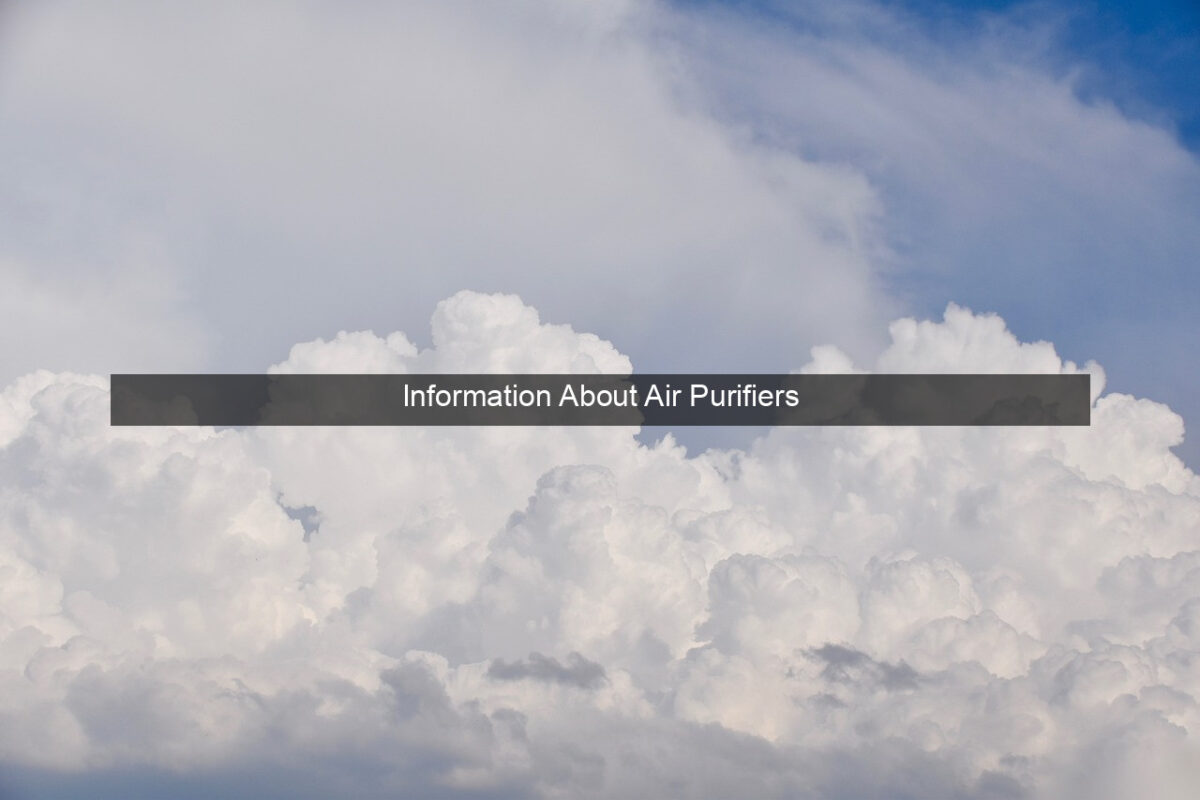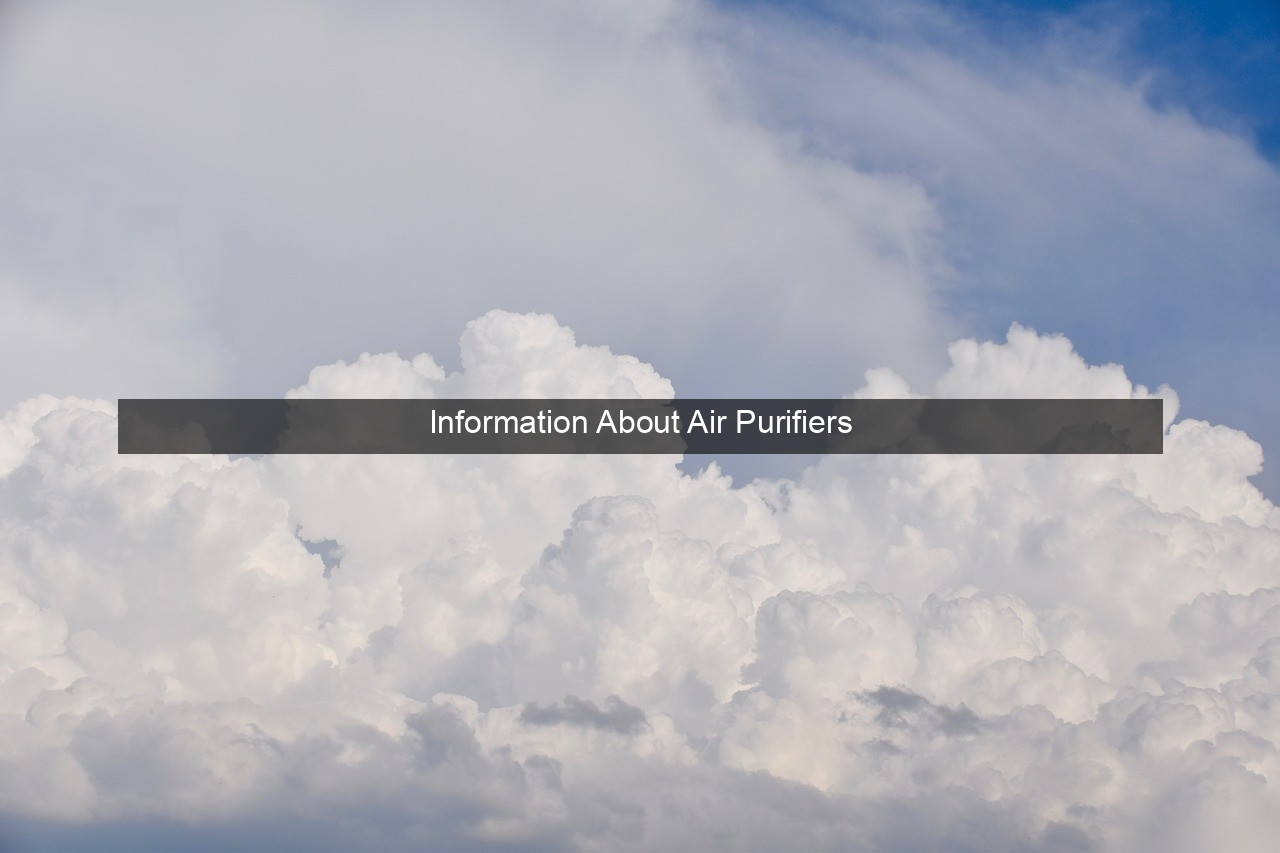Information About Air Purifiers


Breathing Easy: A Comprehensive Guide to Air Purifiers

In today’s world, clean air is more than just a luxury; it’s a necessity. With increasing pollution levels, allergens, and indoor air contaminants, maintaining healthy indoor air quality is paramount. Air purifiers have emerged as a powerful tool in this fight, offering a way to breathe cleaner, fresher air in our homes and workplaces. But with a plethora of options available, navigating the world of air purifiers can feel overwhelming. This comprehensive guide will equip you with the knowledge you need to make informed decisions, ensuring you choose the perfect air purifier for your specific needs and breathe easy knowing you’re investing in your health and well-being. From understanding the different types of purifiers to selecting the right filter for your concerns, we’ll cover everything you need to know to make a smart purchase.
Types of Air Purifiers
HEPA Filters
High-Efficiency Particulate Air (HEPA) filters are the gold standard in air purification. These filters are incredibly effective at capturing microscopic particles, including dust mites, pollen, pet dander, and mold spores. HEPA filters are designed to remove at least 99.97% of airborne particles with a size of 0.3 microns, making them a popular choice for allergy sufferers and those seeking superior air quality. They are particularly effective in trapping common household allergens, providing relief from allergy symptoms.
HEPA filters work by forcing air through a dense mat of randomly arranged fibers. This intricate network traps particles of various sizes, preventing them from recirculating back into the room. The tightly woven structure ensures that even the smallest particles are captured, resulting in cleaner, healthier air. HEPA filters are a reliable and efficient way to improve indoor air quality.
HEPA filters are commonly found in a variety of air purifiers, ranging from portable units to larger whole-house systems. They are a versatile and effective solution for a wide range of air purification needs, from removing allergens to reducing the spread of airborne illnesses.
Activated Carbon Filters
Activated carbon filters excel at removing odors, gases, and volatile organic compounds (VOCs) from the air. These filters are particularly effective against smoke, pet odors, cooking smells, and chemical fumes. They work by adsorbing these pollutants onto their porous surface, effectively neutralizing them and leaving the air fresh and clean. This makes them a valuable addition to homes with pets, smokers, or those located in areas with high levels of air pollution.
The porous nature of activated carbon provides a large surface area for adsorption. This allows the filter to effectively trap a wide range of gaseous pollutants, ensuring comprehensive odor and VOC removal. Activated carbon filters are a crucial component in maintaining a healthy and odor-free indoor environment.
Activated carbon filters are often combined with HEPA filters in air purifiers to provide comprehensive air cleaning. This combination offers the best of both worlds, removing both particulate matter and gaseous pollutants for optimal air quality.
UV Air Purifiers
Ultraviolet (UV) air purifiers utilize UV-C light to kill or inactivate airborne microorganisms like bacteria, viruses, and mold spores. These purifiers work by exposing the air to UV-C light, which disrupts the DNA of these microorganisms, preventing them from reproducing and spreading. This makes them a valuable tool in reducing the spread of airborne illnesses and maintaining a healthier indoor environment.
UV air purifiers are often used in conjunction with other filtration methods, such as HEPA filters, to provide a multi-layered approach to air purification. This combination ensures comprehensive removal of both particulate matter and microorganisms for optimal air quality.
While effective against microorganisms, UV purifiers are not effective against larger particles like dust or pollen. Therefore, they are often used in combination with other filtration technologies for comprehensive air cleaning.
Choosing the Right Air Purifier
Room Size
One of the most important factors to consider when selecting an air purifier is the size of the room you intend to use it in. Air purifiers are rated based on their Clean Air Delivery Rate (CADR), which indicates the volume of air they can clean in a specific time. Choosing a purifier with a CADR appropriate for your room size ensures optimal performance and effective air cleaning.
Measure the square footage of your room and compare it to the manufacturer’s recommended room size for the purifier. This will help you determine if the purifier is powerful enough to effectively clean the air in your space. Choosing the right size purifier is crucial for achieving the desired level of air quality.
Consider the ceiling height as well, as this can affect the overall volume of air in the room. For larger rooms or spaces with high ceilings, you may need a purifier with a higher CADR to ensure adequate air circulation and filtration.
Filter Types
Consider your specific air quality concerns when choosing filter types. If you suffer from allergies, a HEPA filter is essential. For odor removal, an activated carbon filter is a must. If you’re concerned about airborne germs, a UV purifier might be a good addition. Understanding the different filter types and their functionalities will help you select the right combination for your needs.
Some air purifiers offer a combination of filter types, providing comprehensive air cleaning. These multi-stage filtration systems can address a wider range of air quality concerns, making them a versatile and effective choice for many households.
Research the different filter options available and choose the ones that best address your specific air quality concerns. This will ensure that your air purifier is effectively targeting the pollutants that are most relevant to your needs.
Noise Level
Air purifiers can vary in noise level, from a quiet hum to a more noticeable whir. Consider the location where you plan to use the purifier and choose a model with a noise level that suits your environment. If you plan to use the purifier in a bedroom, a quieter model is recommended for uninterrupted sleep.
Check the manufacturer’s specifications for the noise level of the purifier, typically measured in decibels (dB). This will give you an idea of how loud the purifier will be when operating. Choose a model with a noise level that is acceptable for your intended use.
Some air purifiers offer different fan speeds, allowing you to adjust the noise level based on your needs. This can be a useful feature for those who want to have more control over the purifier’s operation.
Maintaining Your Air Purifier
Filter Replacement
Regular filter replacement is crucial for maintaining the effectiveness of your air purifier. Filters become clogged over time, reducing their ability to capture pollutants. Refer to the manufacturer’s recommendations for filter replacement intervals, typically every 3-6 months, depending on usage and air quality.
Keep track of when you last replaced your filters and set reminders to ensure timely replacements. This will help you maintain optimal air purifier performance and ensure clean air in your home.
Some air purifiers have filter replacement indicators that alert you when it’s time to change the filters. This can be a helpful feature for those who tend to forget about regular maintenance.
Cleaning
Regular cleaning of the air purifier itself is also important for optimal performance. Dust and debris can accumulate on the exterior of the unit, potentially affecting its efficiency. Wipe down the exterior of the purifier with a damp cloth regularly to remove dust and keep it clean.
Clean the pre-filter, if applicable, according to the manufacturer’s instructions. The pre-filter helps to capture larger particles, extending the life of the main filters. Regular cleaning of the pre-filter can improve the overall performance of the air purifier.
Refer to the user manual for specific cleaning instructions for your model. Following the manufacturer’s recommendations will ensure that you are cleaning your air purifier properly and safely.
Conclusion
Investing in an air purifier is an investment in your health and well-being. By understanding the different types of air purifiers available, considering your specific needs, and maintaining your unit properly, you can significantly improve your indoor air quality and breathe easier. From combating allergies to eliminating odors, the right air purifier can make a noticeable difference in your home environment. Take the time to research and choose wisely, and you’ll reap the benefits of cleaner, healthier air for years to come.
What is an air purifier?
An air purifier is a device designed to remove contaminants from the air in a room to improve indoor air quality.
What are the benefits of using an air purifier?
Air purifiers can reduce allergens, remove odors, and improve overall



